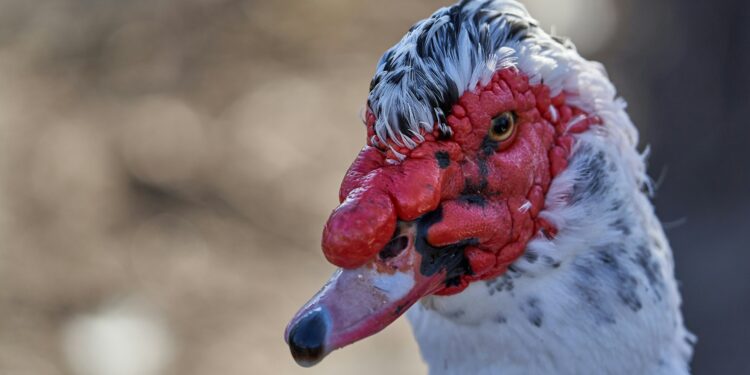The next major threat to American health may already be in the air—literally.
As H5N1 avian influenza continues to spread among bird populations globally, confirmed cases of human infection have begun to surface, raising concerns of a potential zoonotic spillover event. The stakes are high: while most human infections have occurred in individuals with direct exposure to poultry, several cases have shown severe illness and mortality. And now, with evidence mounting of limited human-to-human transmission, the U.S. must confront an uncomfortable question: is our healthcare system prepared for another respiratory crisis on top of an already intense flu season?
Public health agencies like the CDC and WHO are treating the outbreak with increasing urgency. Though no sustained transmission has been documented, the biological nature of influenza—with its high mutation rate and capacity for reassortment—makes the threat far more than hypothetical.
The Biological Wildcard: Why H5N1 Is So Concerning
H5N1 is not new. First identified in humans in 1997, the virus has flared in cycles, primarily in Asia and the Middle East. What makes the current wave so worrisome is its scope: it has now spread to new avian populations across the Americas, including poultry in the U.S., and wild mammals such as seals and foxes, according to the USDA. This expansion raises the evolutionary probability of the virus adapting to human hosts.
While the current human cases are rare, they are severe. Mortality rates for confirmed H5N1 infections remain around 50%, albeit among a small sample size. The virus’s affinity for the lower respiratory tract, unlike seasonal flu strains, leads to pneumonia, multi-organ failure, and acute respiratory distress syndrome.
The potential for a recombination event—where H5N1 mixes with a human-adapted influenza strain—could produce a new virus with high transmissibility and severe pathogenicity. That is the nightmare scenario that keeps virologists awake.
Implications for America’s Upcoming Flu Season
The United States faces several intersecting risks heading into fall and winter:
- Conflation of Pathogens – The overlap of seasonal influenza, lingering COVID-19 variants, and a potential H5N1 threat could overwhelm diagnostic, treatment, and vaccine delivery systems.
- Vaccine Strategy Stress – Traditional flu vaccines are designed months in advance based on circulating strains. The emergence of H5N1 in humans would require a rapid pivot in vaccine development, which may not be possible at scale before the season peaks.
- Public Trust Fatigue – After three years of COVID guidance, much of the American public is weary of new health alerts. A new threat may face skepticism or outright resistance, particularly if early messaging is unclear or inconsistent.
- Economic and Labor Impact – As seen in Australia’s current flu wave, surges in respiratory illness correlate with significant increases in sick leave and workplace absenteeism, affecting productivity and supply chains.
What U.S. Officials Are Doing Now
The U.S. Department of Health and Human Services, through its Biomedical Advanced Research and Development Authority (BARDA), is already investing in next-generation influenza vaccines, including mRNA-based prototypes specific to H5N1. Meanwhile, the National Institute of Allergy and Infectious Diseases (NIAID) is coordinating with global partners to monitor mutations and preemptively develop antiviral stockpiles.
The CDC has updated its surveillance protocols for influenza-like illness (ILI) to include indicators for zoonotic influenza, especially in rural areas and communities with agricultural exposure. Local health departments are being advised to integrate poultry workers and veterinarians into their sentinel surveillance networks.
The Role of the Private Sector and Public Messaging
Biotech firms like Moderna and GSK are developing experimental avian flu vaccines, although trials remain in early phases. Rapid production is theoretically possible, but hinges on preexisting pandemic agreements and public-private partnerships.
Meanwhile, communication experts are calling for nuanced public messaging—avoiding panic while emphasizing vigilance. The experience of COVID-19 demonstrated that early transparency and clear risk communication can build or erode public trust.
How Individuals Can Prepare Now
- Get the Flu Shot: While seasonal flu vaccines don’t cover H5N1, they reduce overall respiratory illness burden and hospital crowding.
- Practice Basic Hygiene: Masking in high-risk settings, handwashing, and staying home while symptomatic remain effective deterrents for all respiratory pathogens.
- Avoid Wild Birds and Poultry Exposure: Particularly in rural or farming contexts, minimize direct contact with birds unless proper PPE is used.
- Stay Informed Through Reputable Sources: Misinformation flourishes in moments of uncertainty. Follow updates from the CDC, WHO, and state health departments.
Conclusion: Between Preparedness and Probability
While H5N1 may never spark a pandemic, its growing proximity to human populations and documented severity make it a risk that can no longer be ignored. For America, the challenge lies not just in vaccine development or surveillance, but in readiness at every level—from local clinics to national stockpiles to public perception.
The flu season ahead may be more complicated than years past. Whether it becomes catastrophic or contained will depend on decisions made now—in labs, boardrooms, and living rooms alike.















